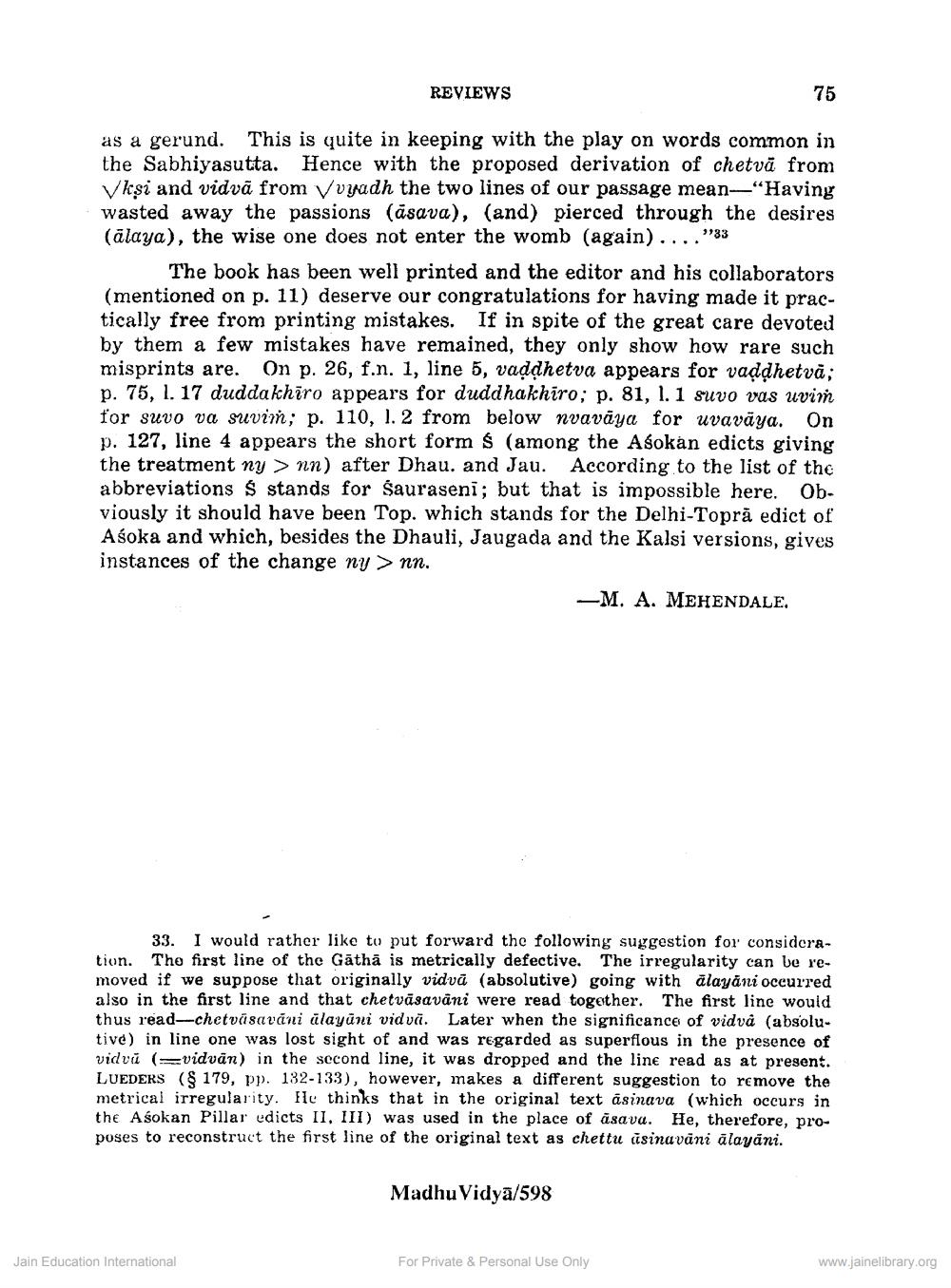________________
REVIEWS
75
as a gerund. This is quite in keeping with the play on words common in the Sabhiyasutta. Hence with the proposed derivation of chetvā from V kşi and vidvā from Vuyadh the two lines of our passage mean-"Having wasted away the passions (āsava), (and) pierced through the desires (alaya), the wise one does not enter the womb (again).... "33
The book has been well printed and the editor and his collaborators (mentioned on p. 11) deserve our congratulations for having made it practically free from printing mistakes. If in spite of the great care devoted by them a few mistakes have remained, they only show how rare such misprints are. On p. 26, f.n. 1, line 5, vaddhetva appears for vaddhetvà; p. 75, 1. 17 duddakhiro appears for duddhakhiro; p. 81, 1. 1 suvo vas uvim for suvo va suvin; p. 110, 1.2 from below nvavāya for uvaväya. On p. 127, line 4 appears the short forms (among the Asokan edicts giving the treatment ny > nn) after Dhau. and Jau. According to the list of the abbreviations $ stands for Sauraseni; but that is impossible here. Ob. viously it should have been Top. which stands for the Delhi-Topră edict of Asoka and which, besides the Dhauli, Jaugada and the Kalsi versions, gives instances of the change ny > nn.
-M. A. MEHENDALE.
33. I would rather like to put forward the following suggestion for consideration. The first line of the Gathā is metrically defective. The irregularity can be removed if we suppose that originally vidvà (absolutive) going with alayāni occurred also in the first line and that chetvāsavāni were read together. The first line would thus read-chetväsaváni ülayāni vidvä. Later when the significance of vidvà (absolutive) in line one was lost sight of and was regarded as superfious in the presence of vidvů ( vidvan) in the second line, it was dropped and the line read as at present. LUEDERS ($ 179, pp. 132-133), however, makes a different suggestion to remove the metrical irregularity. Hlu thinks that in the original text asinava (which occurs in the Asokan Pillar udicts II, III) was used in the place of asava. He, therefore, proposes to reconstruct the first line of the original text as chettu üsinavāni älayāni.
Madhu Vidyā/598
Jain Education International
For Private & Personal Use Only
www.jainelibrary.org




